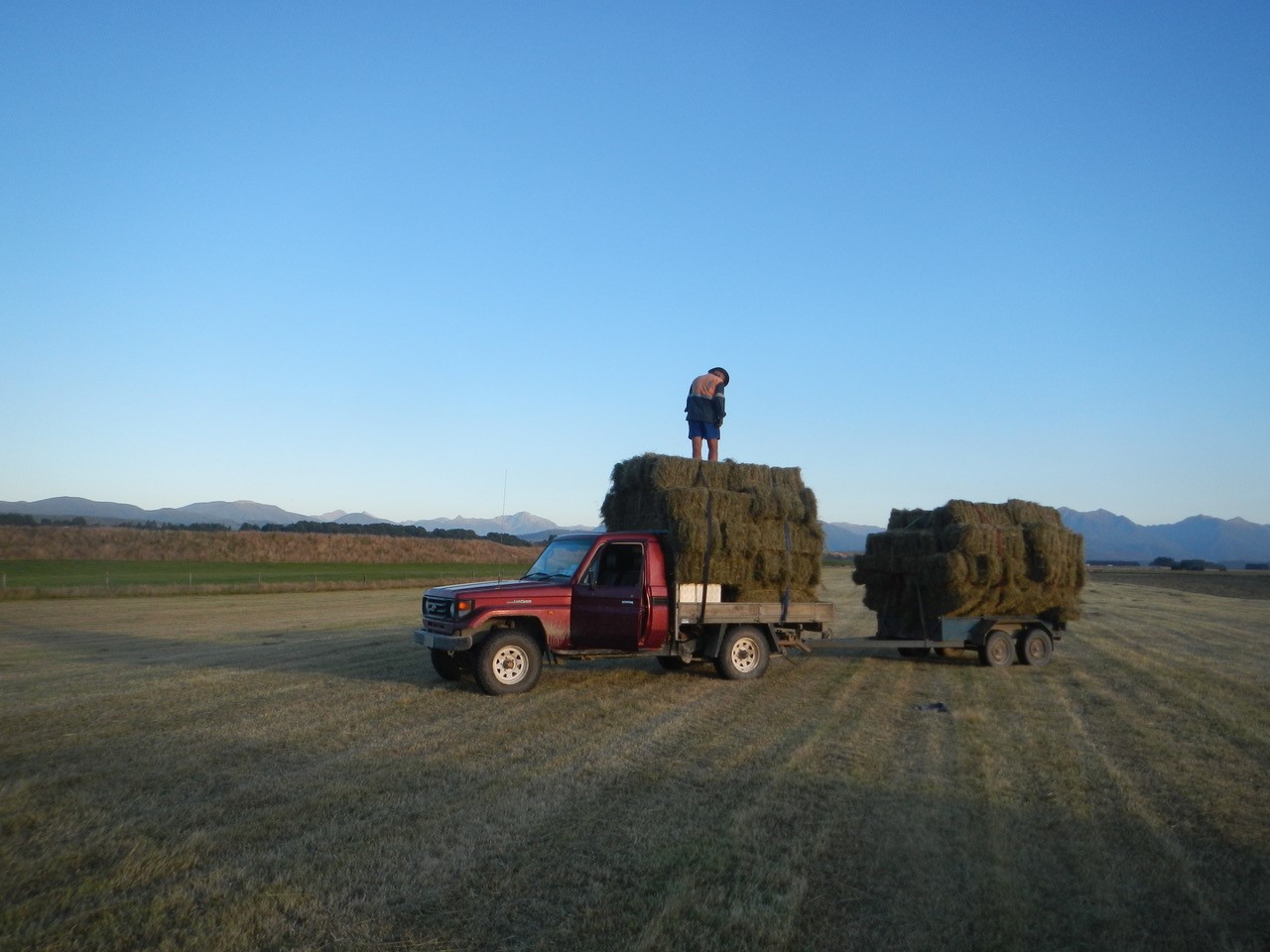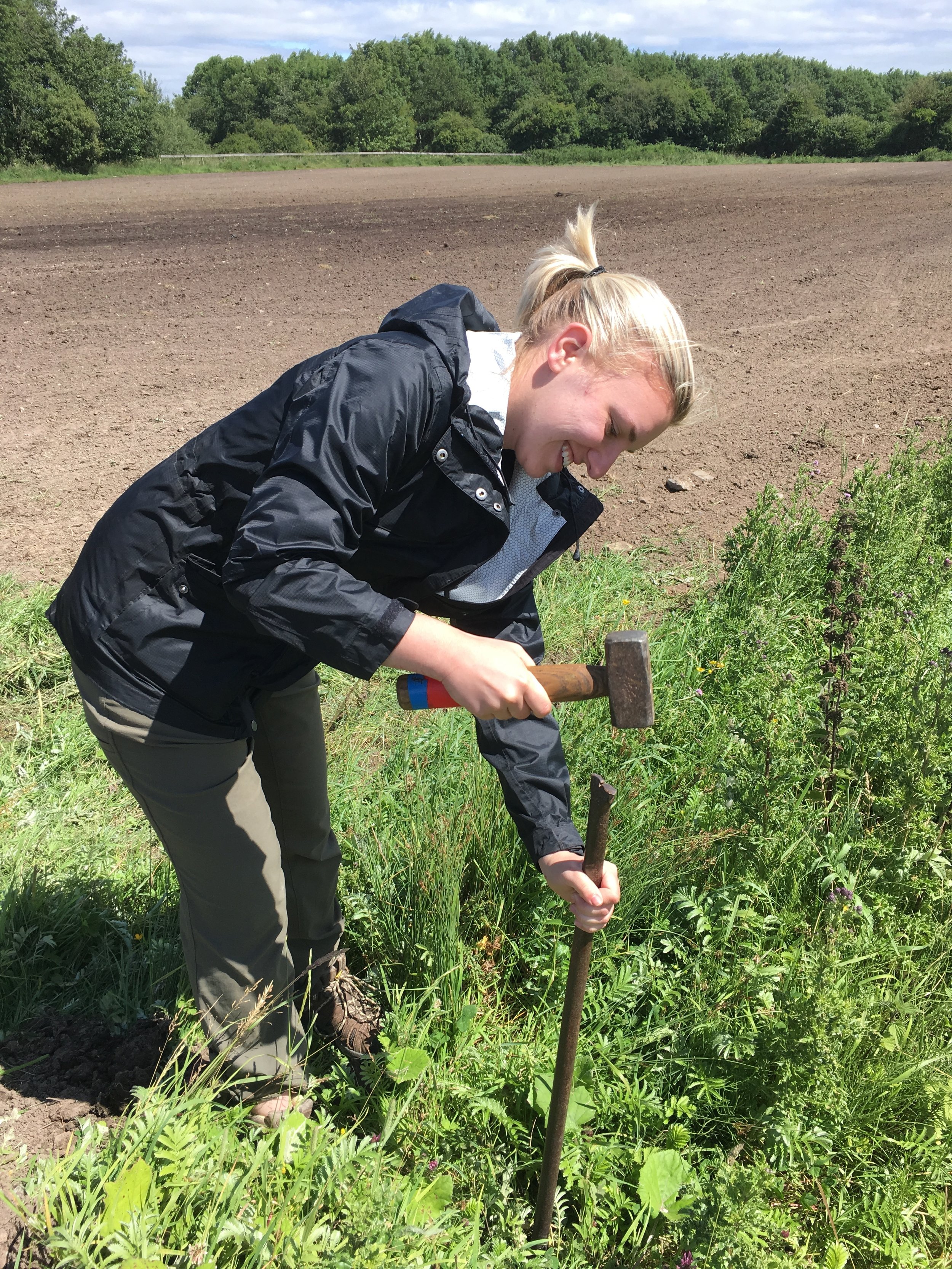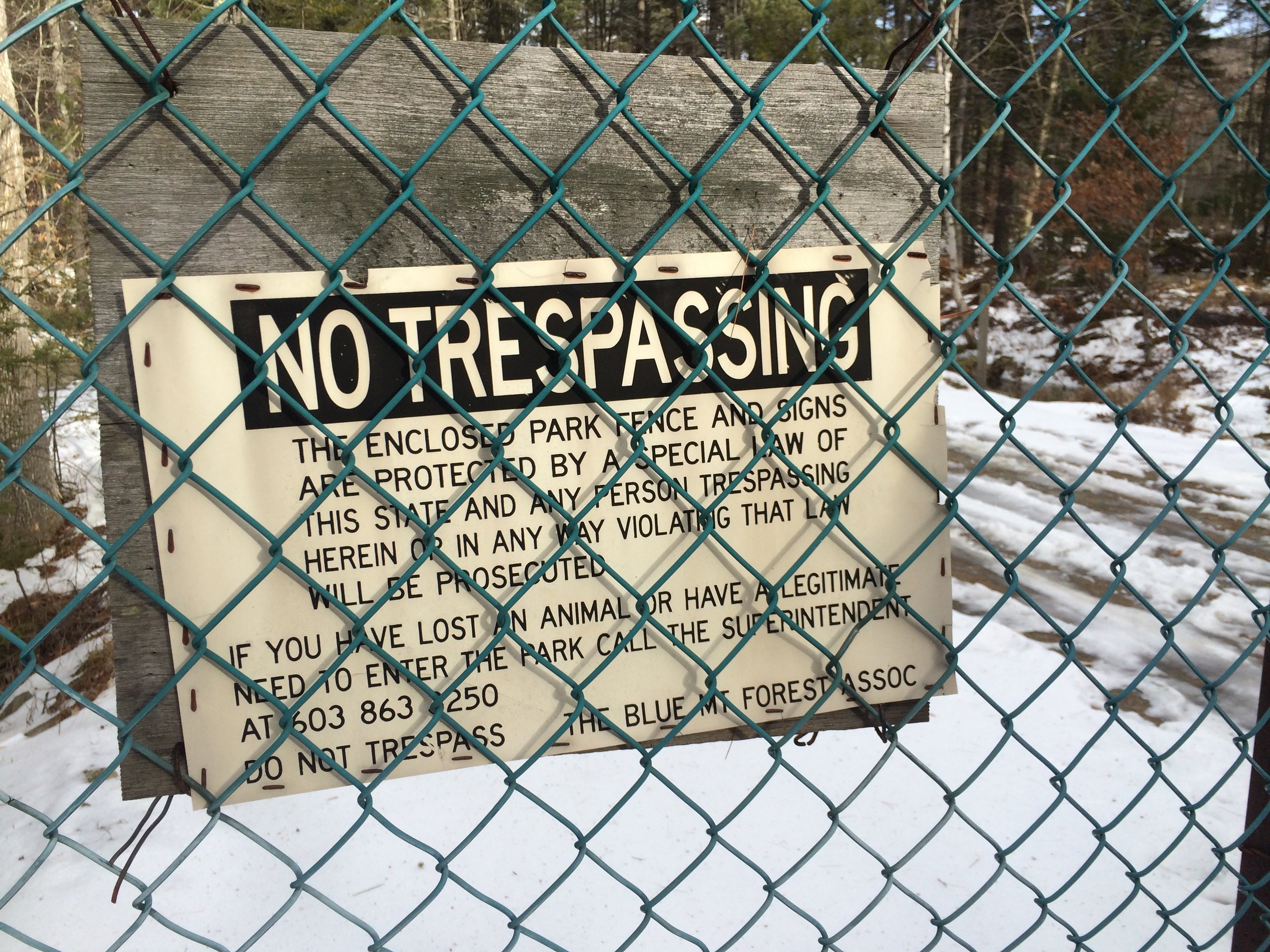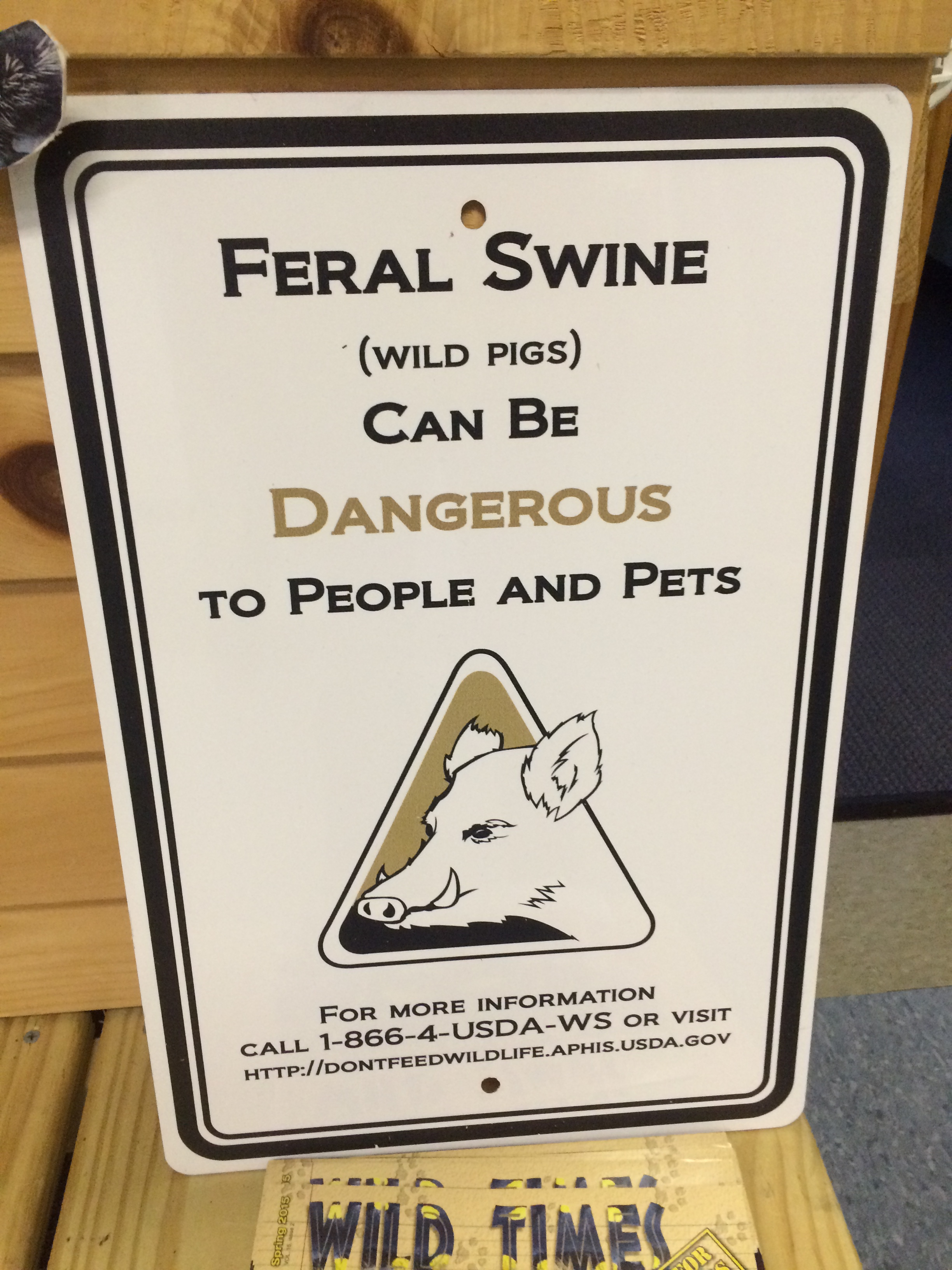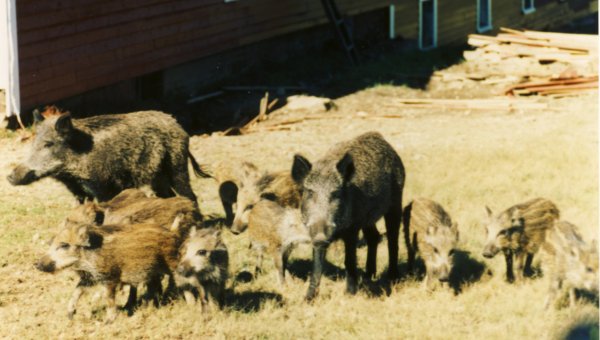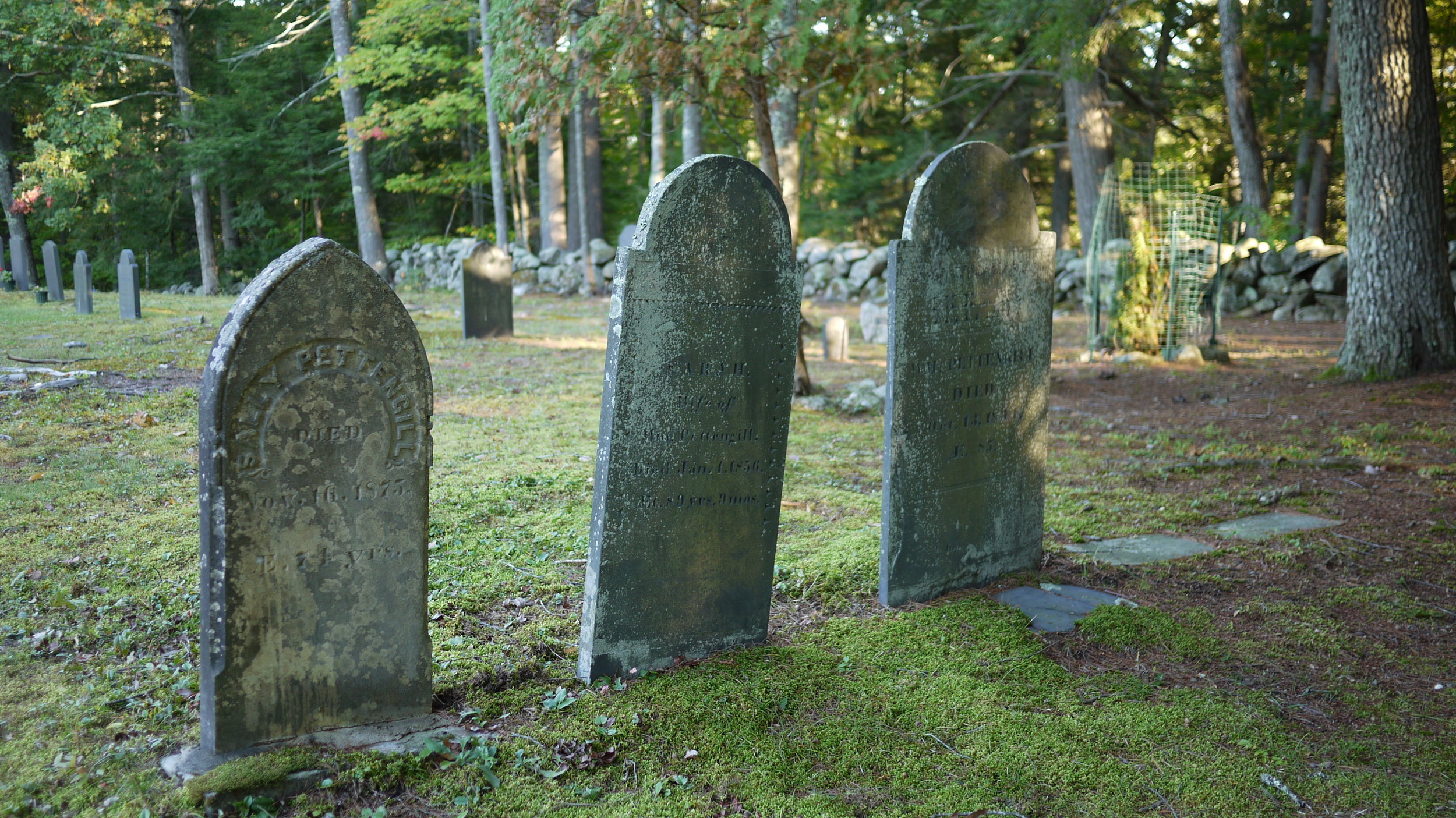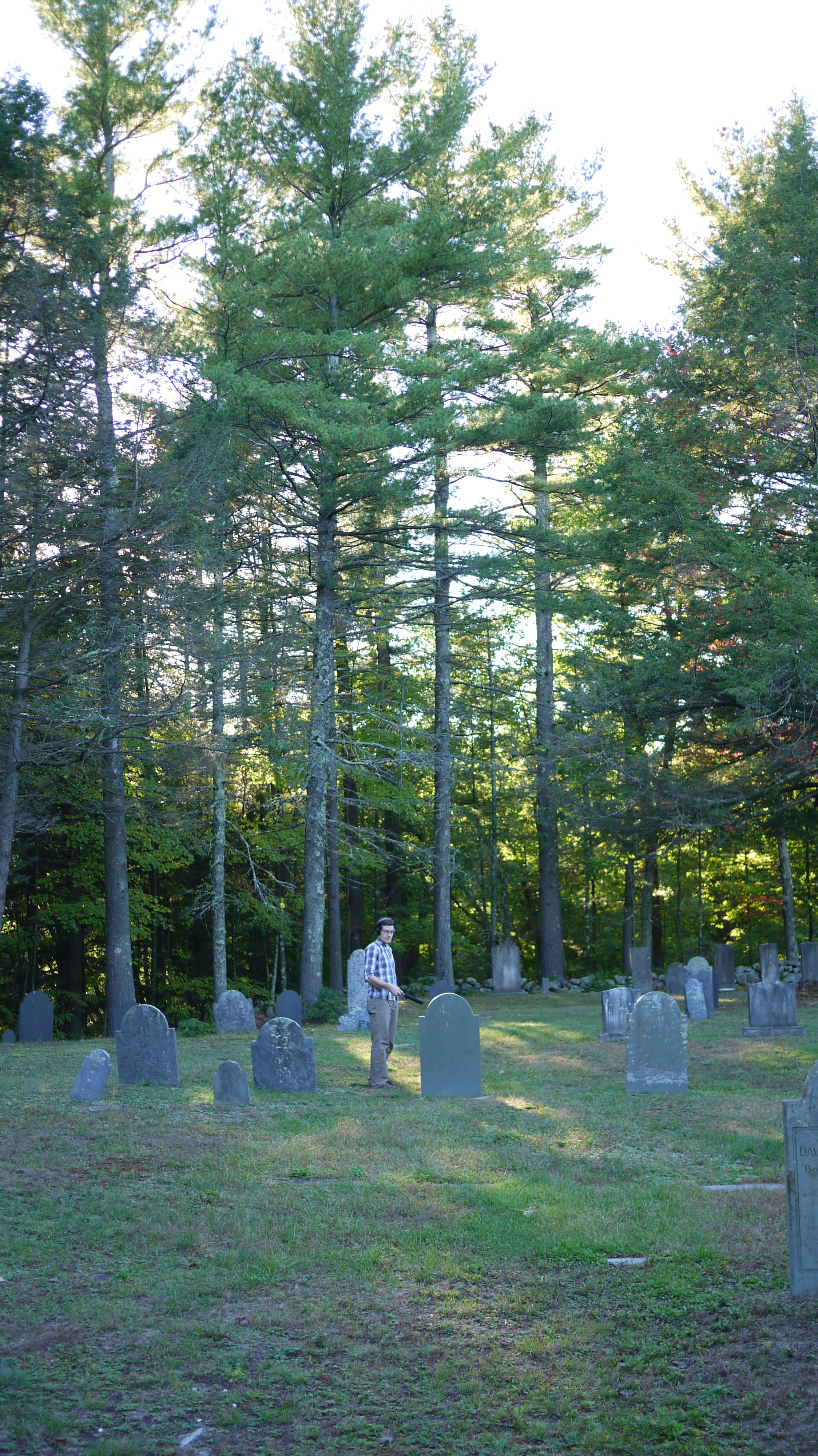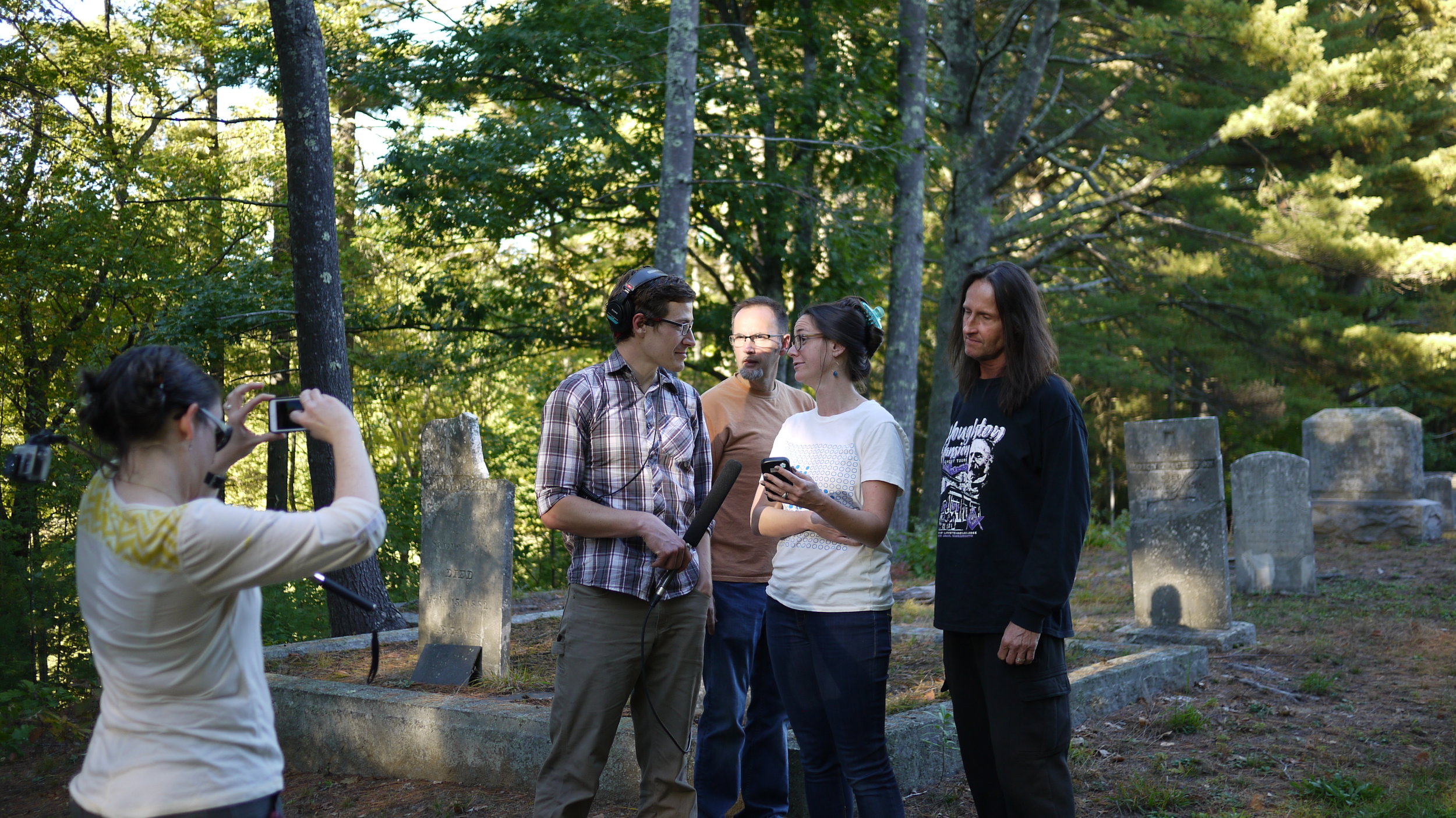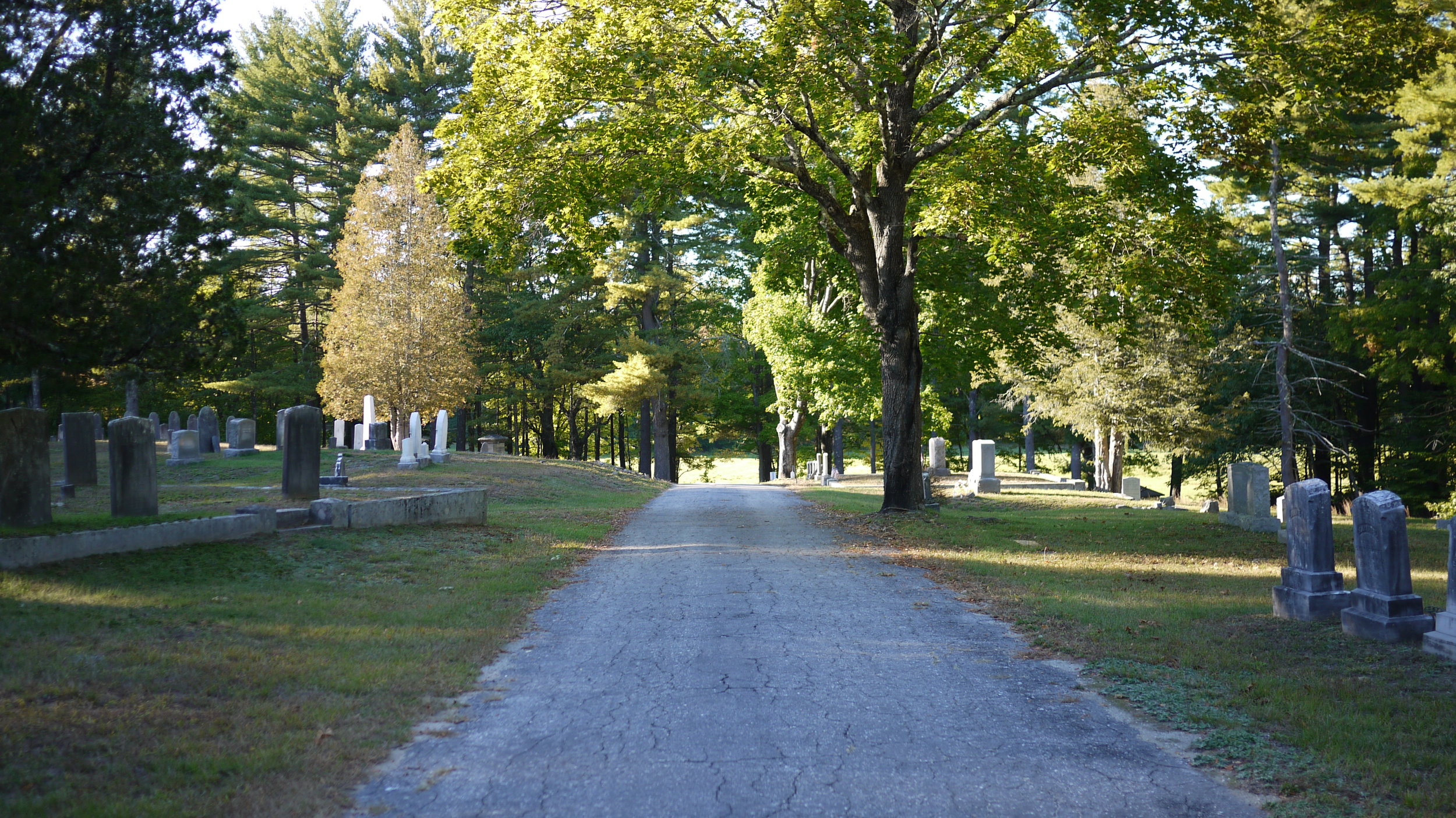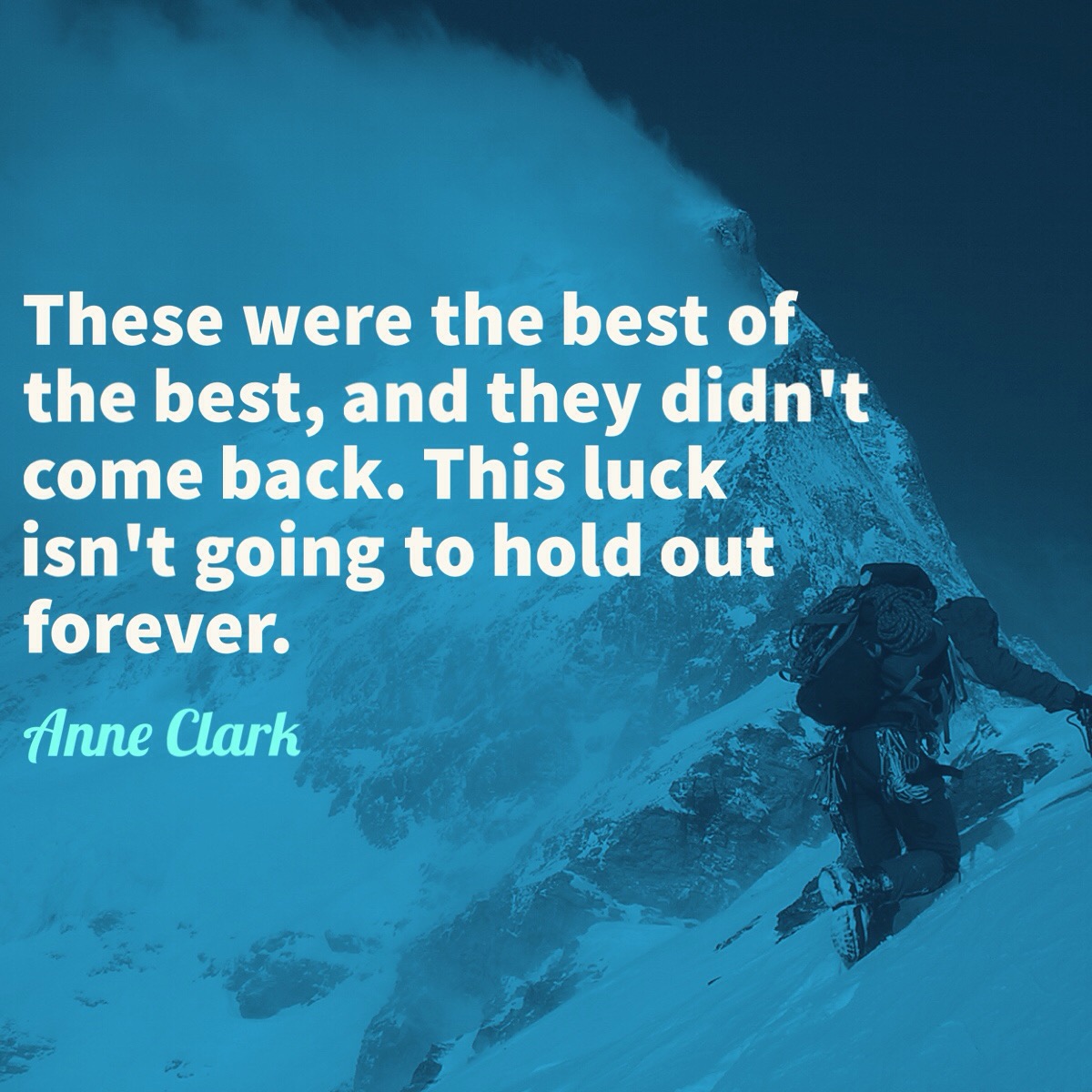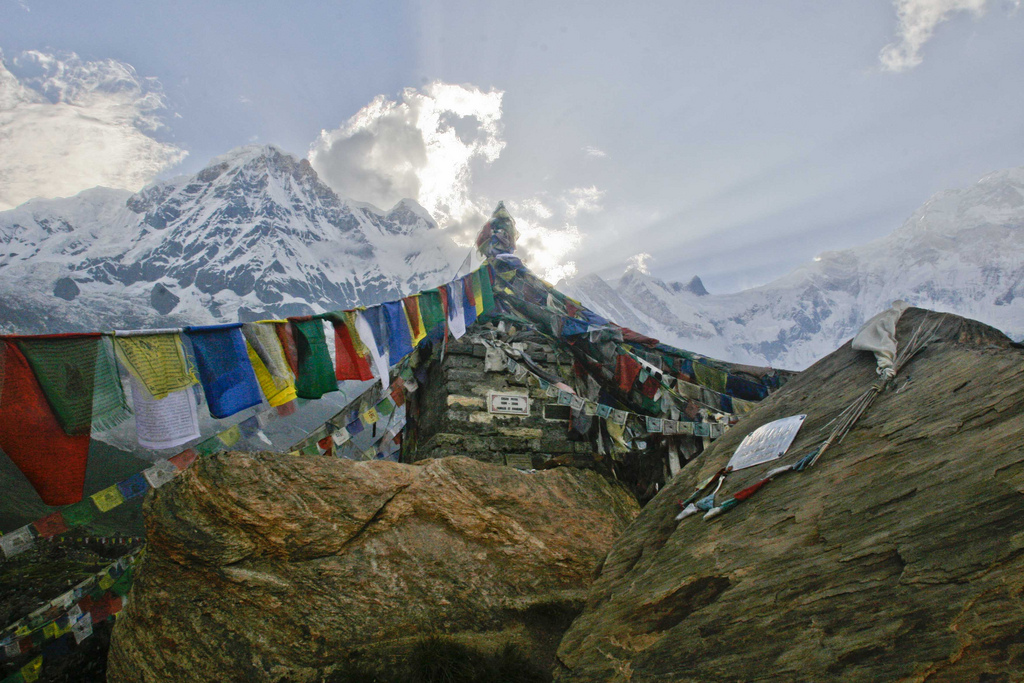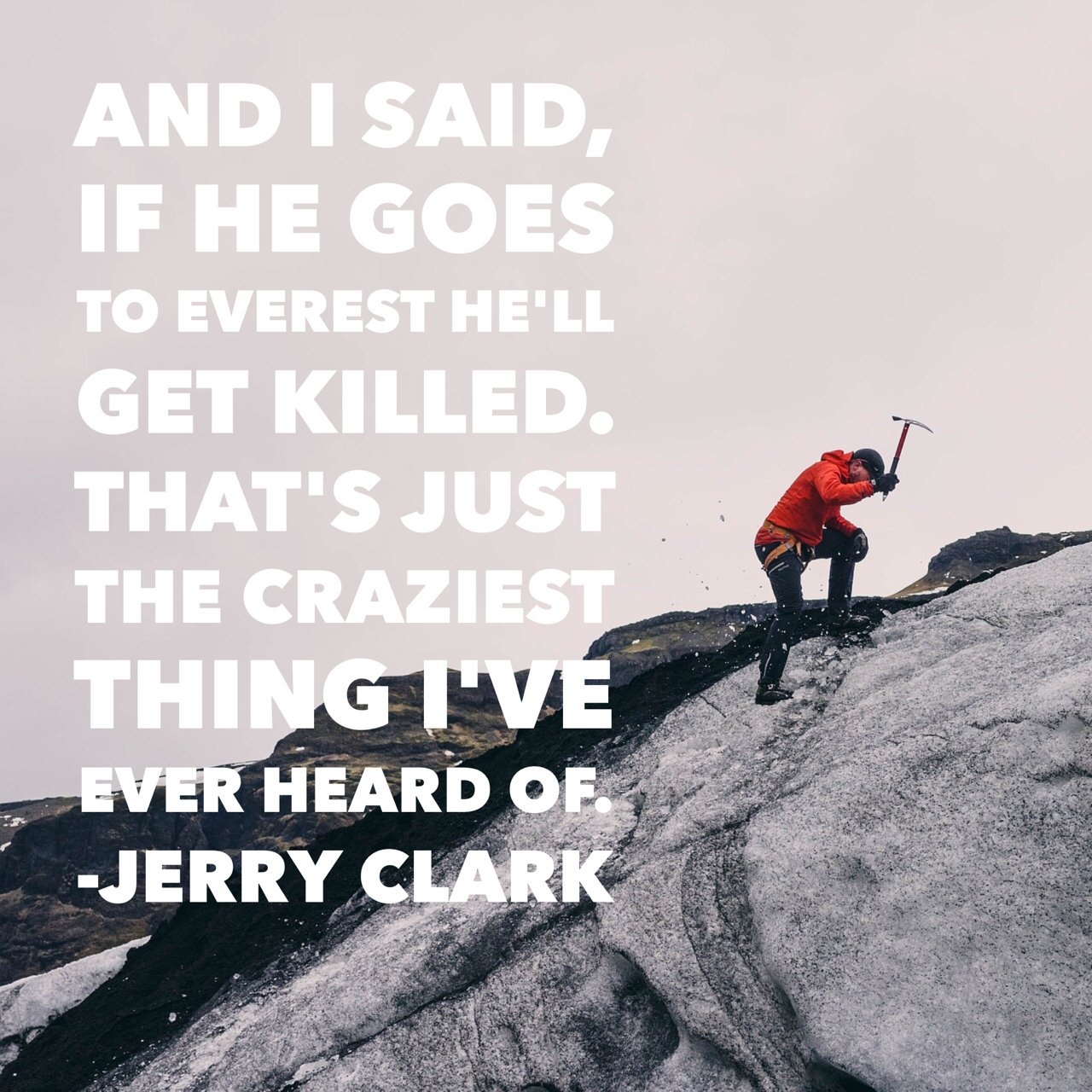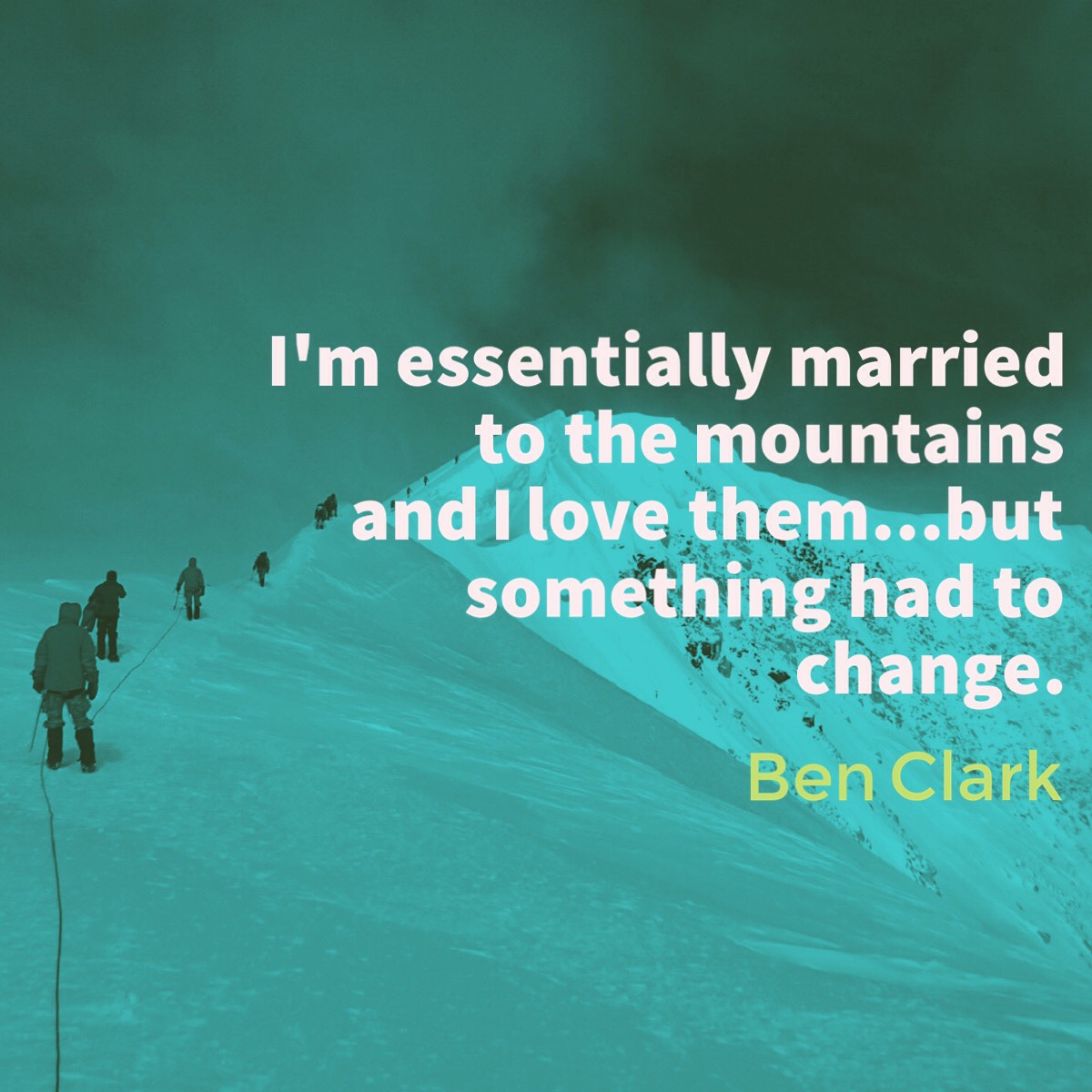The Hitchhiker's Guide to WWOOFing
Looking for a relatively cheap way to spend a few weeks abroad? You might want to consider World Wide Opportunities on Organic Farms, or WWOOF. Have an aversion to mud, farm animals, and learning on the job? Maybe reconsider that first suggestion. But for those of you who are looking for an adventure, on a budget, Sam and Molly have composed a “guide” for would-be WWOOFers to think about before taking off–from how to make sure your visa is in order, to embracing the awkwardness of close quarters with strangers, while still maintaining your dignity.
VISAS ARE COMPLICATED
Sam and Aubrey in a place where they WWOOFed without a visa, because they are a couple of rule breakers.
When you WWOOF, you don't get "paid" in the traditional sense, but what you are doing is working in exchange for room and board. And in some countries, you're not allowed to WWOOF unless you get a visa issued by that country. That needs to be done in advance. You can't just fly to the country where you plan to WWOOF and say, "I'd like a visa, please!"
Claire WWOOFed in Sweden and Spain for two months with no problems, but when she went to Ireland, she and her girlfriend were stopped in customs. Ireland, as it turns out, is one of a handful of countries that require a special visa just for WWOOFers and other work exchange programs, called a working holiday visa. Claire and her girlfriend were detained, their mugshots were taken, and they were kicked out of the country. Not ideal.
Other countries consider WWOOFers to be just like any other tourist, like in Europe where you can stay for just three months. Sam and Aubrey tested the limits of that rule when they WWOOFed. They stayed in Europe for ten months, moving from farm to farm. When they were heading back to the US, a customs official in Iceland called them out on it. After a tense moment, they were eventually allowed to return to the US but were told they wouldn't be allowed back to Europe for three months. Crisis averted, but the lesson here is one all travelers should heed: make sure your papers are in order before you leave the country.
YOU'VE GOT TO BE GAME
Ian West holding one of the turkeys.
Killing and cleaning chickens, hard physical labor, chickpeas upon chickpeas, fertilizing with your host's stored urine, all of these scenarios and so many more can be part of the WWOOFing experience. You need to be ready to roll with the punches, which could mean slaughtering poultry or adapting to a new diet.
When Ian arrived on a farm in Oregon, within minutes he was helping kill and prep chickens for eating. What started out as a way to fill a few weeks in between finishing up a backpacking trip and starting a trip with a National Outdoor Leadership School wound up being a crash course in learning where your food comes from.
For Andy, who WWOOFed in New Zealand, most days were filled with hard physical labor, building a long fence, digging post holes for hours in the hot sun. After a full day he was famished, only to find that his meal would be chickpea burgers with hummus on top. Chickpeas on top of chickpeas is not the most satisfying meal. Another woman Sam spoke to worked on a farm where her meals were toast. Three times a day. Just slices of toast.
WWOOFing can be challenging and it's important to try new things you might not have otherwise tried, but it's equally important to know your own limits.
WWOOFING IS HARDER AS A WOMAN
Shea and her friend at one of their WWOOF homes.
To be fair, a whole lot of things are harder as a woman, and WWOOFing is no different. Shea had a couple of really uncomfortable moments WWOOFing. One of her hosts, a single male, would have her and her friend fertilize the crops using a mixture of water and urine that he had stockpiled. To be clear, it was his urine. On another occasion, a male host at one of the farms would take all of his baths in the stream, and then walk the property naked, with no warning.
Aubrey struggled at one WWOOF location when one of her hosts would ask Sam to go prune trees and chop wood and then ask Aubrey to clean the kitchen. At first, she felt like it was a chore like the others, but after a while it became clear to her that her host thought she was useless.
When you are choosing a WWOOFing opportunity, do your research before you choose a farm to work on, but also, don't be afraid to speak up or leave if you feel you're being treated unfairly. Man or woman, if you're in a situation where you, or someone you're with is not being treated with respect, stick up for yourself and for others!
YOU ARE ALL UP IN PEOPLE'S BUSINESS
Jacob heading to the fields with his WWOOF host's child in tow.
Molly was fortunate to have a WWOOFing experience that included a big, beautiful farm house, with a private bath. Sam had a variety of experiences, good and bad, large and small. But quarters, in general, can be tight. It can start to feel claustrophobic when you're sharing space with relative strangers.
For Jacob, the experience was particularly intimate and uncomfortable. The family at one of the farms where he worked was having marital problems. Serious marital problems. In the mornings he would hear the couple shouting at each other, and he was left tending to two toddlers who were clearly upset that their parents were fighting. On top of that, the patriarch of the family began asking Jacob for advice. Jacob was 24 years old, so imagine his confusion when a forty-year-old father of two was asking him for parenting and marital advice.
Your experience will definitely vary, but living in close quarters can be tricky and you may find that you are privy to very personal and, ahem, challenging conversations and situations.
BE OUR (GOOD) GUEST
A breakfast Molly ate while WWOOFing in Ireland.
WWOOFing is a two-way street. You're counting on the host to be gracious and fun, but they're counting on YOU to be a good guest. Sam's favorite WWOOF host was Maria Jesus who ran a cheese farm in Spain. Her experiences with WWOOFers run the gamut of great to just plain bad. One guest showed up, ate dinner, did laundry, showered, and the sneaked off in the morning without doing a speck of work.
At Maria Jesus' farm WWOOFers were given a place to cook for themselves and then she would go grocery shopping to stock the kitchen. On one occasion she had a pair of WWOOFers who didn't know the first thing about cooking and she had to teach them the basics, like how to cut a tomato.
Molly's host in Ireland, Anne, was an amazing cook and incredibly accommodating. But just like WWOOFers, hosts have their limits. An Italian couple came to work on the farm and she found them delightful, but on the evening of their arrival the woman announced that she was vegetarian. Anne explained that ham was on the menu for dinner and the woman replied with: "Oh that's alright, I eat ham." This seemed odd to Anne, but her guest did in fact eat the ham and then ate the other meatless options. Eventually, the woman discovered that the ham had come from the pigs on Anne's farm, and became terribly upset and refused to eat any more ham. Farm to table was a little too close for her comfort, apparently.
Anne also has a few repeat WWOOFers that come to help out on the farm including Bob who despite having no background in farming, became a vital helper on the farm. The first time he arrived he stayed with Anne for 3 months and did everything that needed to be done. Bob puts his head down and works hard, something any WWOOF host can appreciate. So remember, you want to have a good experience, and your host has probably invited you into their home hoping to provide a good experience, but sometimes you have to meet in the middle. When in doubt, do your best, and treat people how you'd like to be treated!
YOU'LL PROBABLY LOVE IT...AT LEAST THESE PEOPLE DID
Jeremy enjoying some of the fruits of his labor.
Everyone we spoke to about their experience loved it, would do it again, and recommended it to others. Even Shea who dealt with a naked host AND a host who stored his own urine to use for fertilizer. Even Jacob who became a defacto au pair and a reluctant marriage counselor.
One more person who had perhaps the most unbelievable WWOOFing stories is Jeremy. He went to Spain, Italy, Israel, and Wales during a gap year between high school and college. In Italy he stayed in a castle on the outskirts of a little village with what sounds like the descendant of the feudal lord who used to rule the village. He ate wild boar, drank home-made wine, did shots of whiskey in the morning; he provided a slew of coming of age stories set in an idyllic Italian location.
Soon after his Italian adventures, he traveled to Israel and worked on an herb farm next to the border with the Gaza strip. This was in 2009 when a new round of hostilities had kicked off and he said he could see rockets flying overhead from Gaza at night. An experience he will not soon forget.
These are likely not the experiences that a tourist gets while riding a bus though the historic district of old European cities. WWOOFing is a strange, difficult, and often times wonderful way to explore other countries, meet new people, and build up a stockpile of amazing stories to share with family and friends.
Correction: Jeremy misspoke, he was in Israel in 2009, not 2007. This post has been changed to reflect that correction.
Outside/In was produced this week by:
Outside/In was produced this week by Molly Donahue and Sam Evans-Brown with help from: Maureen McMurray, Taylor Quimby, Hannah McCarthy, Jimmy Gutierrez, and Logan Shannon
Special thanks to everyone who responded and shared their sometimes shocking, always entertaining WWOOFing stories.
Music from this week’s episode came from Gillicuddy.
Our theme music is by Breakmaster Cylinder.
If you’ve got a question for our Ask Sam hotline, give us a call! We’re always looking for rabbit holes to dive down into. Leave us a voicemail at: 1-844-GO-OTTER (844-466-8837). Don’t forget to leave a number so we can call you back.
















